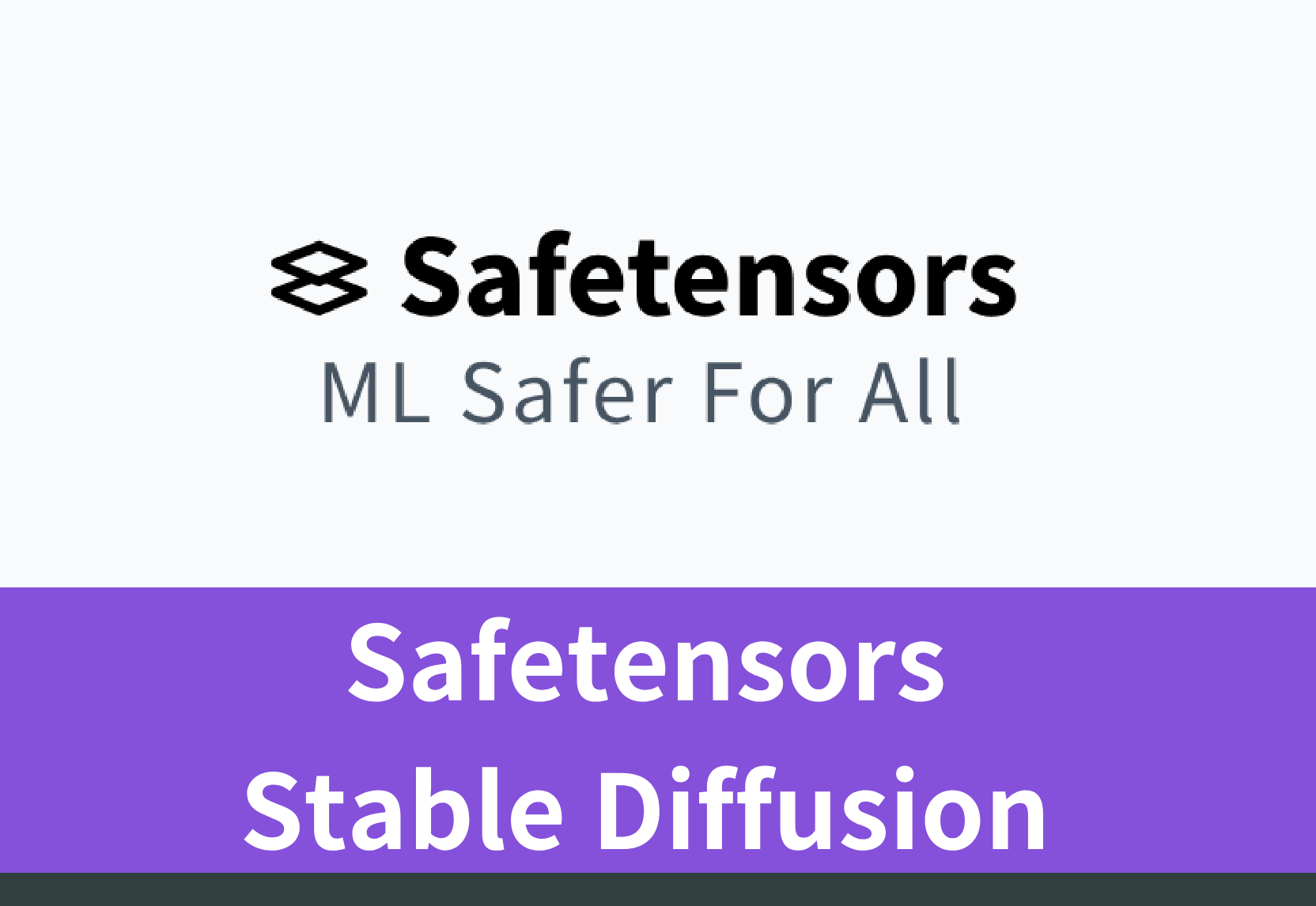Easy Guide to Safetensors & Stable Diffusion

Dive into safesensors and stable diffusion with our comprehensive guide. Simplify complex concepts for efficient application.
Introduction
In the rapidly evolving field of machine learning, there is a growing need for secure and stable model distribution. This is where safetensors and stable diffusion come into play. Safetensors, machine learning model weights in a secure format, provide explicit control over model diffusion, ensuring stability.
In this easy guide, we will explore the concepts of safetensors and stable diffusion, understand their importance, and learn how to install and use them. We will also delve into the world of stable diffusion models, including their creation process and the various models available. Lastly, we will examine the impact of safetensors and stable diffusion on the tech world. So let’s dive in and unravel the secrets behind safetensors and stable diffusion!
Understanding Safetensors
Before we dive into the nitty-gritty details, let’s understand what safetensors are and why they are important.
What are Safetensors?
Safetensors is the safe and fast file formats for storing and loading tensors. Typically, PyTorch model weights are saved or pickled into a file with Python’s pickle utility. However, these traditional checkpoint (.ckpt) format files can contain malicious Python code that a user might accidentally execute while using those models. Safetensors are a safer and more secure alternative to the standard .ckpt format. They are specifically designed to enhance security and provide a higher level of protection compared to traditional .ckpt files, making it ideal for sharing model weights.
Importance of Using Safetensors
- The primary motive behind utilizing safetensors is to prioritize safety. With the expanding landscape of open-source software and model distribution, it is crucial to ensure the downloaded model weights are free from any malicious code. The current size of the header in safetensors prevents parsing extremely large JSON files addressing this concern.
- Safetensors offer the advantage of efficient loading speed when switching between models. By implementing zero-copy functionality for tensors, safetensors minimize the time required for loading. This loading speed is particularly noticeable when compared to the default case of loading weights to the CPU, ensuring swift and seamless transitions between different models, enhancing overall performance and efficiency.
- Safetensors are more compact and portable, as they prioritize the inclusion of essential model weights. This streamlined approach makes them highly suitable for model deployment and transfer, particularly in web-based or mobile applications.

How does Safetensors Work?
Safetensors provide essential functionality through serialization and compression of neural network data. This process transforms the data into a compact and portable format, enabling efficient storage and transfer. During deploying the model, the serialized tensors are deserialized, converting them back into their original tensor format. Then this seamless deserialization can effortlessly integrated the weights into the model’s architecture, making them readily available for use in various applications.
Installing and Loading Safetensors
Now that we understand the importance of safetensors, let’s learn how to install and load them.
Step-by-Step Installation Guide
Installing safetensors is a straightforward process. Follow these steps to get started:
- With pip: “pip install safetensors”.
- With conda: “conda install -c huggingface safetensors”.
- In addition, you can download and install safetensors from Hugging Face.

Loading .safetensor Files
Once safetensors are installed, loading them into your machine learning model repository is a breeze. Simply use explicit control to load the safetensor format files into your repository, ensuring secure model weight distribution. The web user interface (WebUI) allows for easy loading of safetensors, providing seamless integration with your machine learning workflow.
For more explicit control, you can set use_safetensors=True: Python copy the code below.
from diffusers import DiffusionPipeline
pipeline = DiffusionPipeline.from_pretrained(“runwayml/stable-diffusion-v1–5”, use_safetensors=True)
Model weights may also be stored in a single .safetensors file. If the weights are Stable Diffusion weights, you can load the file directly with the from_single_file() method: Python copy code below.
from diffusers import StableDiffusionPipeline
pipeline = StableDiffusionPipeline.from_single_file(“https://huggingface.co/WarriorMama777/OrangeMixs/blob/main/Models/AbyssOrangeMix/AbyssOrangeMix.safetensors")
Converting Other Formats to .safetensors
In some cases, you may already have model weights in formats other than safetensors. Not to worry, as there is a simple solution to convert these weights into the safetensor format.
Conversion Process
- If you’ve downloaded the Stable Diffusion checkpoint, you can convert the .ckpt files to .safetensors files with the step below:
import torch
from safetensors.torch import save_file
weights = torch.load(“sd-v1–4.ckpt”)[“state_dict”]
save_file(weights, “model.safetensors”)
- Occasionally, weights stored as .bin may require conversion to .safetensors format. To do this, utilize the Convert Space tool to download and convert the pickled weights, and initiate a Pull Request to upload the newly converted .safetensors file to the Hub, which verifies that no unsafe files or suspicious pickle imports are included. When converting, Python copy code below:
from diffusers import DiffusionPipeline
pipeline = DiffusionPipeline.from_pretrained(“stabilityai/stable-diffusion-2–1

Precautions while Converting
When converting model weights, it is crucial to take certain precautions to ensure secure diffusion.Safetensors provide explicit control and secure alternative for model weights diffusion, but it’s important to be aware of potential risks. Here are some precautions to keep in mind:
- Make sure to validate the source of model weights before conversion to prevent the injection of malicious code into safetensors format.
- Implement safeguards to protect against unauthorized diffusion of model weights during the conversion process.
- Ensure explicit control over model weights diffusion, maintaining stability and security throughout the conversion process.
- Regularly update documentation and review the codebase to minimize potential vulnerabilities during model weights conversion.
- By keeping these precautions in mind, you can convert model weights into safetensors format safely, aligning with best practices for secure model distribution.
Introduction of Stable Diffusion Models
Now that we have covered safetensors, let’s shift our focus to stable diffusion models and understand why they are gaining popularity.
Why Stable Diffusion Models are Popular?
Stable diffusion models have gained popularity due to their explicit control over model distribution. These models ensure stable diffusion, providing secure alternative model repository usage. By converting model weights into safetensor format, stable diffusion models prevent unauthorized diffusion and malicious code injection. In the fast-paced world of AI, stable diffusion models provide stability and peace of mind, making them a preferred choice for researchers, engineers, and developers alike.
How are Stable Diffusion Models Created?
Creating stable diffusion models relies on the use of safetensors to store model weights in a secure format. The stable diffusion model, saved in safetensor format, ensures secure model distribution across the repository. Conversion of model weights to safetensor format is a crucial step in creating stable diffusion models. By embracing safetensors, machine learning practitioners can maintain stable diffusion, secure model weights, and protect against unauthorized access or malicious code injection.

Exploring Various Stable Diffusion Models
With stable diffusion models becoming increasingly popular, let’s take a closer look at some of the noteworthy options available.
Stable Diffusion v1.4 and v1.5
Two notable stable diffusion versions are v1.4 and v1.5, both offering stable diffusion pipeline for model distribution. These stable diffusion weights, available in safetensors format, provide explicit control, safeguarding against unauthorized access and malicious code injection.
- Stable-Diffusion-v1–4 resumed from Stable-Diffusion-v1–2 - 225k steps at resolution 512x512 on “laion-aesthetics v2 5+” and 10% dropping of the text-conditioning to improve classifier-free guidance sampling.
- Stable-Diffusion-v1–5 resumed from Stable-Diffusion-v1–2 - 595k steps at resolution 512x512 on “laion-aesthetics v2 5+” and 10% dropping of the text-conditioning to improve classifier-free guidance sampling.

Realistic Vision and DreamShaper Models
The Realistic Vision model repository harnesses stable diffusion model weights, ensuring secure and stable model distribution. DreamShaper, on the other hand, employs stable diffusion v1.5, providing explicit control over model distribution for applications such as Dreambooth and Civitai. These stable diffusion models, integrated with safetensors, offer secure and stable model weights, ensuring safe usage and protecting against potential security breaches. You can download the models from CIVITAI.

How to Install and Use a Stable Diffusion Model
Now that we have explored stable diffusion models, let’s move on to learning how to install and use them.
Installation Guide for Stable Diffusion Models
- Download the safetensors file for the stable diffusion model you want to install.
- Ensure compatibility with your preferred development environment, such as Colab or GitHub.
- Follow the documentation and available tutorials to pull the stable diffusion model repository, ensuring secure model distribution.
- Use explicit control and secure pull request methods to contribute to stable diffusion model development and usage.
- Validate and review the model weights repository, ensuring secure model distribution and stable diffusion pipeline usage.
Make sure you place the downloaded stable diffusion model/checkpoint in the following folder “stable-diffusion-webui\models\Stable-diffusion”. With the model successfully installed, you can now utilize it for rendering images in Stable Diffusion.

Using a Stable Diffusion Model in Novita.ai
Novita.ai is the one-stop platform with over 100+ APIs that provides a variety of Stable Diffusion models for AI image generation online, so it’s convenient for both developers and individuals to choose the model they want.
Here’s an example of using a Stable Diffusion Model to generate an image from an image:
- Step 1: Launch on novita.ai website. Then create or log in an account if you have already had one.
- Step 2: Nevugate “img2img” after clicking on “playground” button.

- Step 3: Select a model you want from the list.

- Step 4: Upload the original image in the field.
- Step 5: Input the “Prompt” to describe what you want to create in the AI image. The more detailed your description is, the better the images are.
- Step 6: Set the parameters below according to your needs.

- Step 7: Turn to “Advanced” page to enter the “Negative Prompt” to describe what you want to avoid. And set the other parameters.
- Step 8: Click on “Generate” button, download and share the results on the social media.

- You can try to create images in various styles by changing different Stable Diffusion Models.

How are Safetensors and Stable Diffusion Impacting the Tech World?
The impact of safetensors and stable diffusion can be felt across the tech world, revolutionizing model distribution and usage. By providing a secure alternative for model weights, safetensors ensure explicit control and stable diffusion, protecting against unauthorized access and malicious code injection.
Machine learning practitioners can confidently distribute their models, knowing that text description security and secure model weights distribution are maintained. Stable diffusion models, accompanied by safetensors, offer stability, security, and peace of mind, empowering researchers, engineers, and developers in their AI journeys and leading to better collaboration, secure repository usage, and increased efficiency.

Conclusion
In conclusion, Safetensors and Stable Diffusion have revolutionized the tech world. Safetensors provide a secure and reliable platform for handling sensitive data, ensuring privacy and protection. It is essential to understand the concept and importance of Safetensors for efficient and safe data management. The installation and conversion process is straightforward, making it accessible for users. Stable Diffusion models offer advanced solutions for various applications, from realistic vision to dream shaping. The popularity of these models stems from their ability to generate high-quality and realistic results, enabling users to leverage their capabilities effectively. Overall, Safetensors and Stable Diffusion drive innovation and open up new possibilities in the tech industry.
Frenquently Askend Questions about Safetensors in Stable Diffusion
Are All Models Available in .safetensor Files?
No, not every model will have a .safe tensor file available. It is essential to check the available file types before downloading.
Where to Get .safetensor Files?
You can download many .safetensor Files from the Models section of Hugging Face’s website.
novita.ai, the one-stop platform for limitless creativity that gives you access to 100+ APIs. From image generation and language processing to audio enhancement and video manipulation,cheap pay-as-you-go , it frees you from GPU maintenance hassles while building your own products. Try it for free.
Recommended reading